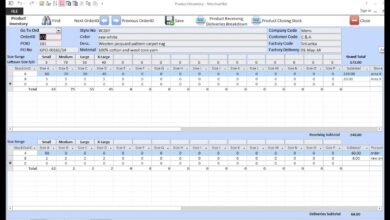Python Interview Questions for Freshers — A Complete, Friendly Guide

Introduction
Preparing for your first Python interview can feel intimidating, but with the right focus you can make a strong impression. This article centered on the keyword python interview questions for freshers walks you through the most common questions, model answers, quick coding tasks, problem-solving strategies, soft-skill pointers, and study resources. Read, practice, and you’ll go into interviews confident and calm.
Why interviewers ask these questions
For entry-level roles, interviewers want to know three things:
- Fundamentals — Do you understand basic Python concepts (variables, control flow, functions, data structures)?
- Problem-solving — Can you break a problem down and write correct, readable code?
- Learning potential & fit — Are you curious, can you communicate, and will you grow on the team?
Knowing this helps you answer clearly: prioritize correctness, clarity, and simple explanations rather than trying to sound advanced.
Core technical questions (with short answers you can memorize)
1. What is Python? Why use it?
Python is a high-level, interpreted, general-purpose programming language known for readable syntax and broad libraries. Freshers mention fast development, large community, and suitability for web dev, data science, automation, and scripting.
2. What is the difference between a list and a tuple?
Lists are mutable (you can change elements), created with []. Tuples are immutable (cannot change after creation), created with (). Use tuples where immutability or fixed records are desired.
3. What are Python’s basic data types?
Common types: int, float, str, bool, list, tuple, set, dict. Mention NoneType (None) as Python’s null-like value.
4. How does Python handle memory management / garbage collection?
Python uses automatic memory management with reference counting and a cyclic garbage collector to free unreachable cycles. You can mention del to remove references but not direct manual memory management.
5. Explain mutable vs immutable with examples.
Mutable: list, dict, set — their contents can change. Immutable: int, float, str, tuple changing means creating a new object.
6. How do you handle exceptions in Python?
Use try, except, optionally else and finally. Example:
try:
risky_code()
except ValueError as e:
handle_value_error(e)
finally:
cleanup()
7. What are list comprehensions?
Concise way to create lists: [x*2 for x in range(5) if x%2==0]. They are readable and often faster than manual loops.
8. How to read/write files?
Use open() or the safer with statement:
with open('file.txt','r') as f:
content = f.read()
with ensures file is closed on exit.
9. What is a dictionary and how to use it?
A dict maps keys to values. Example: d = {'name':'Ana', 'age':25}. Use d.get('key', default) to avoid KeyError.
10. Explain functions, arguments, and return values.
Define with def. Arguments can be positional, keyword, default, *args, **kwargs. Functions return with return if absent, returns None.
Common coding questions for freshers (practice these)
1. Reverse a string
Implement with slicing: s[::-1], or loop to build reversed string.
2. Check if a string is a palindrome
Compare string to its reverse, usually after normalizing case and removing non-alphanumeric chars.
3. Find duplicates in a list
Use a set to check seen items or use collections.Counter to find items with count > 1.
4. Fibonacci sequence (iterative)
Iterative approach is easy to explain and efficient for interviews:
def fib(n):
a, b = 0, 1
for _ in range(n):
a, b = b, a + b
return a
5. Count frequency of characters
Use a dict or collections.Counter:
from collections import Counter
Counter(s)
6. Merge two sorted lists
Classic two-pointer approach explain time complexity O(n+m).
Sample medium question with explanation
Problem: Given a list of integers, return the second largest number.
Approach: One pass tracking largest and second largest values, O(n) time, O(1) extra space. Handle duplicates and edge cases (list length < 2).
def second_largest(nums):
if len(nums) < 2:
return None
first = second = float('-inf')
for n in nums:
if n > first:
second = first
first = n
elif first > n > second:
second = n
return second if second != float('-inf') else None
Explain your steps verbally during the interview; cover edge cases.
Data structures & algorithms basics employers expect
- Lists/arrays and their operations and complexity
- Dictionaries (hash maps) and sets
- Stacks/queues and when to use them
- Basic searching and sorting (knowing
O(n log n)sorts) - Big-O notation for common operations (lookup, insert, delete)
Python-specific features worth mentioning
- Decorators: functions that modify other functions (mention use-cases: logging, caching).
- Generators &
yield: produce values lazily, memory-efficient for large sequences. lambda, map/filter/reduce: short anonymous functions and functional utilities.__init__and OOP basics: define simple classes, explain attributes vs methods.
For freshers, a basic example of a class with __init__ and a method is sufficient.
Behavioral & soft-skill questions related to coding
- Tell me about a project you built using Python. Focus on problem, approach, tools, and learning.
- How do you debug code? (Answer: print/logging, stepping through debugger, breaking problem into smaller tests)
- Tell me about a bug you fixed explain root cause and solution.
- How do you keep learning? (mention courses, docs, GitHub, practice sites)
Interviewers value clarity, humility, and learning attitude.
Common mistakes freshers make — and how to avoid them
- Writing code without explaining — narrate your thought process.
- Ignoring edge cases — test with empty inputs, duplicates, maximum/minimum.
- Overcomplicating solutions — prefer simple correct code; optimize only if necessary.
- Poor variable names — use clear names for readability.
- Not asking clarifying questions — it’s fine to ask about input constraints or expected behavior.
Preparation checklist (practical routine)
- Learn and practice the 20-30 core Python questions above.
- Spend time on coding sites (Hackerrank, LeetCode, CodeSignal) 30–60 minutes daily.
- Build a small project (web scraper, CLI tool, Flask app, simple data analysis) to discuss in interviews.
- Read Python docs for functions you use often (
list,dict,itertools). - Practice explaining solutions out loud or with a friend communication matters.
Quick reference: example answers you can adapt
- “What is PEP8?” — PEP8 is Python’s style guide. Say you follow it to keep code readable (naming, indent, line length).
- “What is
__name__ == '__main__'?” — It checks if the script is run directly vs imported; used to run test code or main entry point.
Final tips for the interview day
- Arrive early, set up your environment if remote (IDE, terminal).
- Clarify input/output format before coding.
- Write clean, working code first, then optimize/readability.
- Run through 2–3 test cases including edge cases.
- If stuck, explain your thought process and try a simple brute-force solution interviewers value recovery and reasoning.



